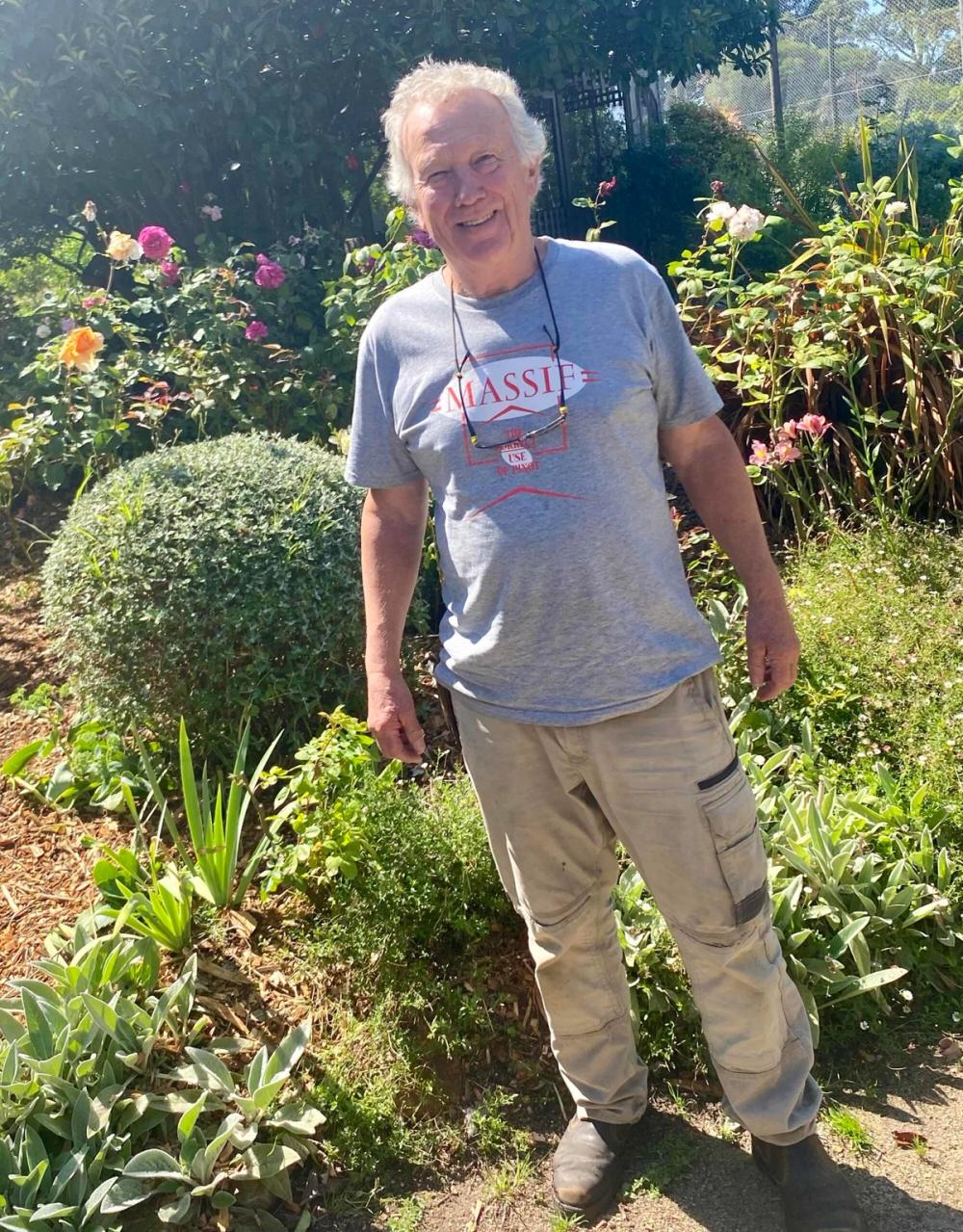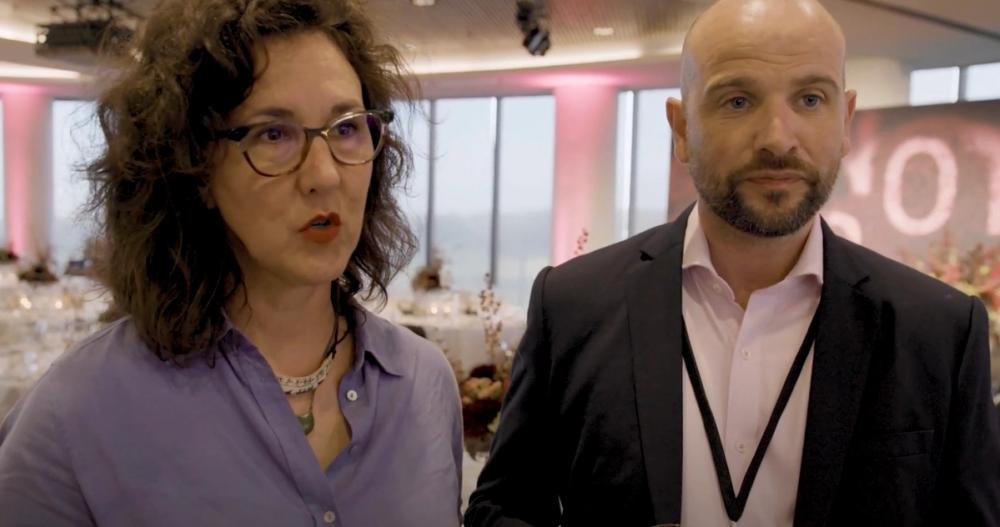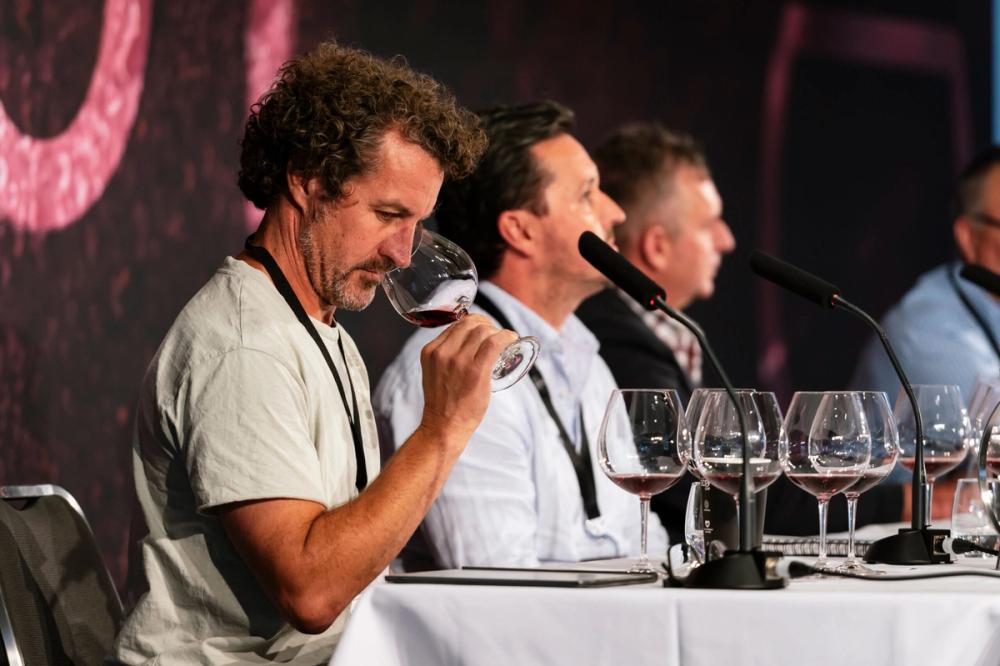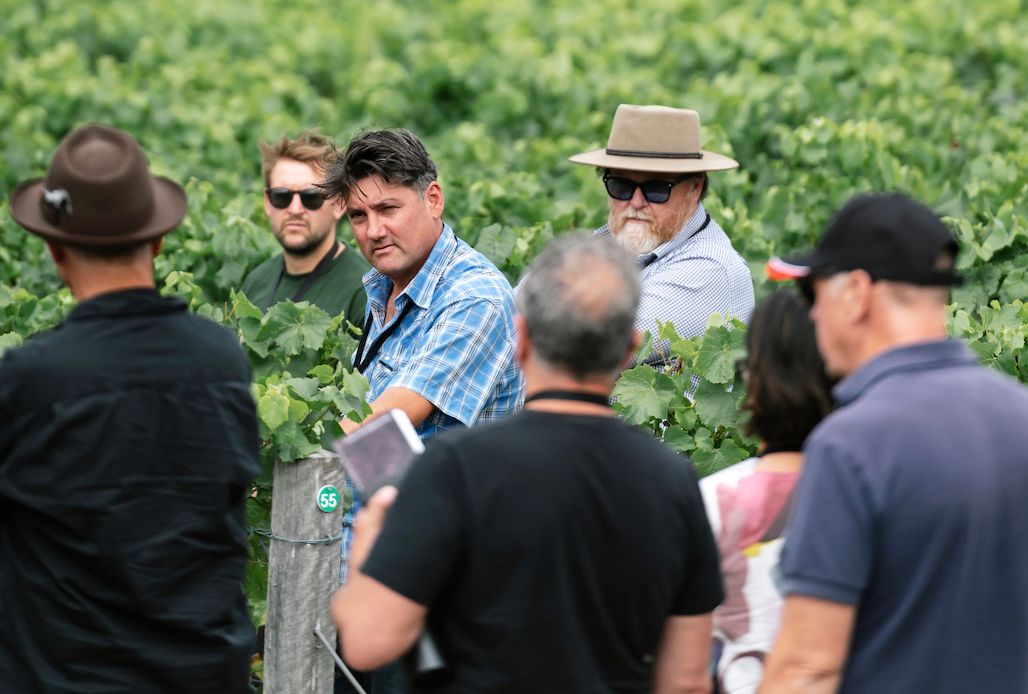“It was with a roo-like spring in my step that I set off for 10 days in Victoria and Tasmania en route to the Pinot Noir Celebration Australia last month,” reports Guy Woodward.
Of all the trips I’ve undertaken in 20 years of freeloading – sorry, wine writing – those to Australia have, by some distance, been the most memorable. Not for the three-star dining or five-star accommodation that can sometimes accompany such jaunts – but for the people.
I’m not sure Aussies do formal. Certainly Aussie winemakers don’t. The mateship ethos that defines their collegiate camaraderie extends to visitors too. Sipping a cool beer in the winemaker’s ute as they drive you home after a long, sweaty day of tasting makes for a markedly unpretentious vibe. Give me that any day over the buttoned-up stiffness of Bordeaux, the faux ‘country casual’ of Napa, or the shabby-chic semi-chaos of Italy.
So it was with a roo-like spring in my step that I set off for 10 days in Victoria and Tasmania en route to the Pinot Noir Celebration Australia last month (note to event organisers: calling a conference a ‘celebration’ immediately makes it more fun). I wasn’t disappointed. You can fit a lot into 10 days when producers are willing to share tastings, lunches, driving duties and the like. And the presence of most of the regions’ notable winemakers – from Geelong to Gippsland, Macedon Ranges to Mornington Peninsula – at the Celebration only cemented the communal feel.
Reasons to be cheerful
(Click here for a video summary of Pinot Noir Celebration)
They have plenty of reasons to celebrate; Aussie Pinot is having something of a moment. Domestically, it has snagged an 18.5% share of restaurant sales – the most of any red variety – despite boasting only 5% of plantings. And exports of Pinot grew 6% in both value and volume last year, bucking the overall Aussie decline. But it’s also at something of a crossroads. And as the sun set on the final night of the event and the happy throng merrily sipped Mornington Pinot while looking out over the water, I couldn’t help detecting a certain unease beneath the surface.
It had been brewing since the first morning, when Carolyn Miller, a marketing specialist and expert in ‘creative persuasion’, opened proceedings by advising producers how to more effectively court the luxury sector. Because, she told the audience: “You’re producing a luxury product – like it or not.”
My sense was that most did not. Certainly there was a noticeable bristling in the room at this, a tension that persisted over the next two days, amid constant mentions of the word “luxury”. “It definitely got people’s backs up,” said event moderator and veteran Australian wine writer Max Allen.
Things weren’t helped when Tamara Grischy of Australian retailer and auctioneer Langton’s accused producers of “lacking belief in pricing and positioning”. “You benchmark your wines against Grand Cru Burgundy, but you don’t position them there,” said Grischy.
She went on to highlight Barossa Shiraz by way of comparison, championing Torbreck’s Dave Powell for spiking its trajectory, and urged Pinot producers to do the same. “There’s a massive gap in the market at AUS$60 (£33.50) and above,” she said.
Jostling for position

Moorooduc’s Richard MacIntyre was “uncomfortable” with the idea of making wine that many wine drinkers can’t afford
Setting aside the motives of the general manager of a business largely focused on premium wines, there was, again, a degree of resistance among attendees. Most of the serious Pinot being made in Australia – and there is more and more of it – sits around the AUS$40-60 mark. Richard MacIntyre, a former Oxford (medical) doctor who set up Mornington stalwart Moorooduc back in the 1980s, was typical in confiding that he was “uncomfortable” with the idea of people suddenly finding his wine unaffordable.
The overriding conflict was perhaps best summed up at the gala dinner. The organisers, evidently aiming to reflect Grischy’s more upscale ambition, had booked an oboe quartet to serenade attendees, who were invited to dress in cocktail attire. Desperately trying to retain the attention of a restless audience sporting various interpretations of this dress code, the oboist broke off from Mozart’s opus 370 in F major to upbraid them for their lack of appreciation.
Identity crisis
It all felt a long way from that beer in the ute – and rather begged the question, what image are Australia’s Pinot producers trying to convey? Where should they be aiming? And where are they comfortable aiming? In short, are Aussie winemakers having something of an identity crisis?
There is certainly no lack of confidence among them. Nor should there be. Over the last 30 years or so, producers have figured out the prime sites, clones and rootstocks for Pinot, learnt how best to cultivate it, and are now refining their winemaking via adroit harnessing of whole-bunch ferments and a more subtle oak regime – all in a sustainable, cool-climate environment. There is an innate – and justified – confidence in the elegant, balanced and refreshing wines they’re producing. In 2016, just 12 Australian Pinots scored over 90 points at the Decanter World Wine Awards; six years later, this number had trebled to 36.

There was both healthy and uncomfortable debate at Australia’s Pinot Noir Celebration event says Guy Woodward
The uncertainty comes over how they’re being marketed – and priced. I led a seminar at the event entitled “Pinot Noir Winemaking Trends: Who’s Leading Whom?” My conclusion after an hour of robust debate with local winemakers was that, for the most part, they’re all leading each other – and are certainly not unduly influenced by critics, consultants or advertising executives. All of which is healthy. But it was striking to see the defensive nature of winemakers whenever anyone suggested an external influence be brought to bear.
Served at the seminar were half a dozen Aussie Pinots, plus one from New Zealand. I asked for a show of hands from the winemakers as to who took notice of what they see coming from across the Tasman Sea. Not one hand went up. This wilful ignorance of a successful, groundbreaking neighbour is either macho posturing or bone-headed stupidity (or both), and Aaron Drummond, previously of Craggy Range and now MD of Mornington flagship Stonier, stood up to say as much (if in more diplomatic terms).
International respect
Ultimately, most producers know that they need to be more outward-looking if they are to expand their reputation. Australia’s domestic market is currently responsible for two-thirds of Pinot sales; growth will come overseas. The Celebration event organisers seem to know this, with a press release heralding opportunities via “building relationships and export avenues in markets where the consumer is well-informed and quality is the most important thing”.

US wine writer, Elaine Chukan Brown, and Richard Hemming MW of 67 Pall Mall Asia were two of the key guests at the event
And the quality is there. As Richard Hemming MW, head of wine at 67 Pall Mall (Asia) and among the panellists on the trends seminar, commented: “At its best, Australian Pinot comfortably competes with the best of California, Oregon, New Zealand and elsewhere. At this relatively early stage of evolution, however, there’s no recognisable signature style, and in such a large and diverse country there’s unlikely ever to be one. By contrast, New Zealand, which has a clearer focus on Pinot, has a stronger identity – especially in Central Otago.”
In a joint New Zealand and Australian Pinot panel hosted by both countries’ generics, Peter McCombie MW recently admitted to a prejudice that Australia is “too hot for Pinot” before recognising that “obviously it’s not” and ultimately expressing a preference for the top Aussie examples. “Central Otago is rather in your face, perhaps lacking subtlety,” said McCombie – a New Zealander himself. By comparison, he lauded the balance of the Australian examples, in particular some “really delicious examples” from Tasmania, where “Pinot has come on unbelievably well” to deliver “fullness without being overbearing”.
Pinot perceptions
There is a job to be done, however, to convince consumers of the country’s suitability for Pinot. As Jeroboams’ Peter Mitchell MW said: “From the consumer tastings I host, many still associate Australia with big, alcoholic wines.”
Mark Bedford at Vindependents said the category plays well with “younger customers who are less influenced by tradition” and “are very happy to pay £35 for an Aussie Pinot if it tastes as good as a £60 Chambolle-Musigny”. And while it may not have the same level of recognition as New Zealand, he said he sells more of it. “Sure, Felton Rd, Mount Edward, Valli are all great. But at £65+, they’re expensive. I really hope the Aussies don’t go the same way…”

Mac Forbes from Mac Forbes Wines shared his knowledge and experience of sustainable farming in the session Our Changing World
It’ll be interesting to see whether or not they do. A couple of weeks after the Pinot Noir Celebration event, I presented a selection of wines to a room of Danish media and somms in Copenhagen. Few had seen many Aussie Pinots before, and the feedback was largely positive, particularly in terms of the elegance and freshness of the wines. The stumbling block was the price, with many pointing out that they already see plenty of good, more competitive German Pinot on the market. German Pinot, though – unlike Burgundy – not mentioned once during my time in Australia.
As Hemming noted: “Australians have a reputation for being savvy marketers with easygoing appeal, so it was surprising to hear so many producers being so introspective at the Pinot Celebration. Creating world-class Pinot Noir is, in itself, not enough. To establish their reputation, Australia’s best Pinot people need to get into their export markets and share it with both trade and consumers.”
Consumers who, as Bedford said of his Moorooduc customers, are “buying into Pinot, not Australia.”

Ten Minutes by Tractor in Mornington Peninsula is another great example of a great Australian Pinot Noir producer
The opportunity is there, and if any country’s producers are adept in telling their story and winning over consumers, it’s the Aussies. “Premium Pinot is a crowded space, especially when the prices are comparable with decent Burgundy,” added Hemming. “On-trade buyers have no shortage of options to choose from – they need a compelling reason to pick Australia, and nobody can tell their stories better than the producers themselves.”
During my trip, Gordon Gebbie, commercial director of Rathbone (whose Yering Station is unusual in selling 30% of its range to export markets, including direct to Waitrose) asked me what I thought producers should be doing to get more visibility in the UK. My answer tallies with Hemming’s view. “Get the winemakers over here,” I told him. “And put them, not commercial directors – and definitely not oboe quartets – front and centre.”
































